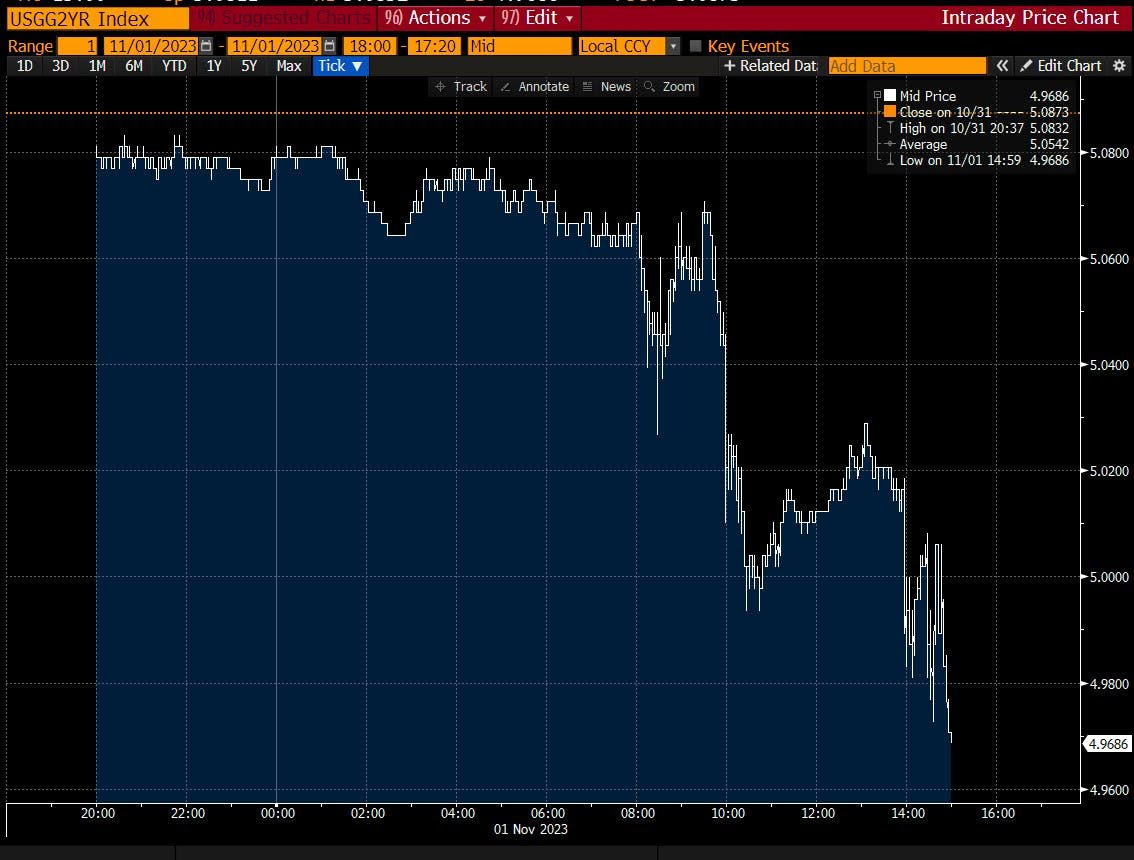The US Federal Reserve Does Nothing And The Market Soars - Why?
We had a sneakily quiet meeting of the Federal Reserve Open Markets Committee this past week.
While the meeting may have flown under the radar, the consequences did not. The US central bank's decision or lack thereof sent financial markets leaping higher.
The jump wasn't trivial. The S&P 500 rose by 5.9% for the week. That means that the highest weekly performance this year came during a time when the central bank accepted that the US economy was weakening.
Why?
Because investors are excited about weaker-than-expected economic data without worrying too much about the implications of that fact.
This might seem strange given the larger context of war, inflation and other serious challenges but investors often race far ahead of events and there was enough smoke during this meeting to stoke investors expectations of a serious change in policy to come.
The obvious question is: can that policy change occur without very bad things simultaneously happening in the economy?
The short answer is: possibly but it will be very difficult to thread that needle.
We didn't cover the FOMC meeting previously since:
There was unlikely to be a change in interest rates, up or down.
The central bank Governors were not even going to update their projections for future interest rates.
In other words, the Fed was expected to do basically nothing and try to reveal as little as possible information about their thinking on the future path of the economy.
That makes it difficult to write about!
"There will be a meeting where nothing will change and the central bankers will try and say nothing" is a tough pitch even for nerd niche financial newsletters.
The reason for the Federal Reserve's attempt to obfuscate is because the US economy is finely balanced right now.
One the one hand, inflation has come down plenty and the economy, while growing strongly right now, has many headwinds confronting it.
These headwinds include: higher energy costs, high interest rates, a tight labor market and some parts of the economy - such as housing loans or other forms of lending - are seriously struggling.
Further, while inflation has moved lower, it is still nearly double the central bank's target.
The jobs report on Friday reinforced this trend towards uncertainty. US payrolls rose by over 150,000 jobs, and while unemployment ticked up a little, it remained below 4%.
150,000 is pretty small but nonetheless demonstrates that - despite being at near full employment - the US continues to add workers.
This is both great but also demonstrates the problem that past gains will be difficult to achieve going forward. There are just not many workers left to employ!
When it came to this week's meeting specifically, the Federal Reserve and its Chair, Jay Powell, delivered.
There was no change in interest rates.
In his press conference, Chair Powell did his best to say as little as possible.
Here is what he said on whether they were done raising rates or not:
"We're not confident that we haven't, but we're not confident that we have."
What do you think financial markets did with all this?
They loved it of course!
No matter how careful and circumspect the Chair was, markets took this as a dovish tilt and, more importantly, evidence that the Fed was "done."
By that they meant "done raising interest rates."
Here is how the US 2 Year bond reacted:
It wasn't the only bond yield to plummet. US 10 Year bond rallied by over 25 bps over 2 days which sent its price skyrocketing.
Remember: bond yields down = prices up.
And here is why people are so excited:
Typically, historically, when the Federal Reserve is done raising interest rates stock markets have a great run.
Will it happen this time?
Who knows! But stock markets are making it happen regardless. The S&P was up over 1% on Wednesday of the press conference and nearly 2% on Thursday and nearly 1% on Friday as people began to price in the hope that this interest rate cycle is well and truly done.
Is it?
It could be but it seems very premature to think so.
Why?
Well there are two more inflation prints this year for one thing.
And the mid-December FOMC meeting looms large afterwards.
We don't feel strongly one way or another though we have said in the past we think one more rate rise this year is likely.
That isn't just our opinion but also that of the central bank governors themselves who have another rate hike scheduled in their formal projections this year.
So, todays rally is both strong and very sudden but it is happening precisely because there has been some weaker economic data and this is creating a set of expectations that are the inverse of what they should be.
That isn't only perverse, that means the rising market is happening on very fragile foundations.
While stock market have rallied hard, they have only made up the ground lost over the last 6 weeks. The overall picture hasn't changed much, yet.
Our suggestion would be: stay cautious. Do not chase this rally thinking that higher highs in major company or indices are coming around the corner. This could provide a great opportunity to sell at good prices and get defensive.
There are other assets worth considering as well. For that we turn to.....
*******
Have questions? Care to find out more? Feel free to Download our App (!!) or reach out at contact@pebble.finance or join our Slack community to meet more like-minded individuals and see what we are talking about today. All are welcome.



